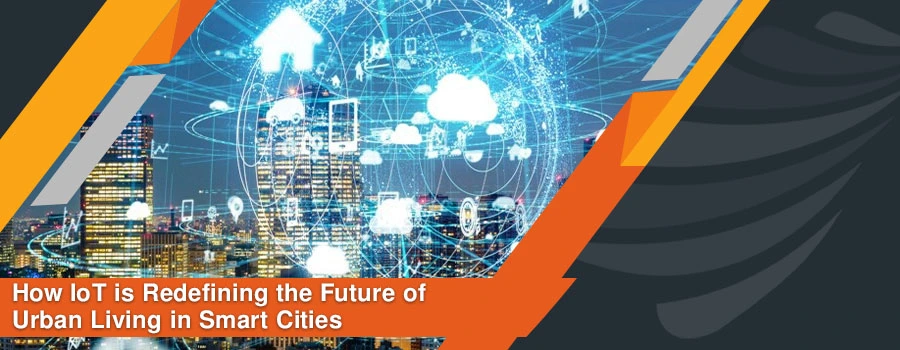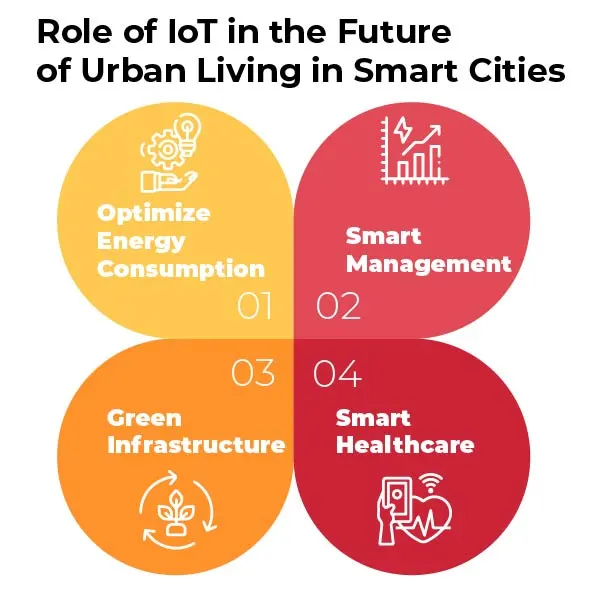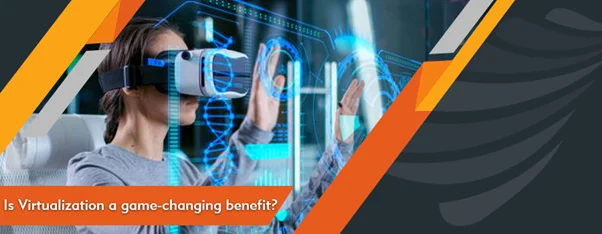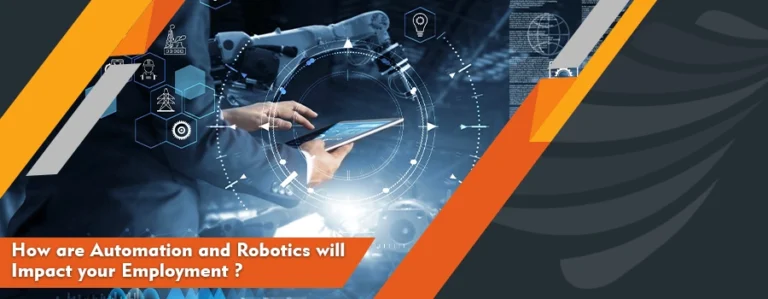A few years back, the smart city concept sounded like a fictional picture one can dream of. You may have heard about smart city development but have not believed in becoming part of it in a few years. Today, you can see that the old infrastructure concepts are completely reshaping – changing how we live, work, and contribute to society’s growth.
With the integration of advanced technology and data-driven solutions, you can now experience living in a completely new world. The main catalyst behind all these developmental steps is the Internet of Things (IoT). With IoT, you can experience transformation in agricultural practices, traffic systems, fuel consumption, waste management, energy utilization, and many more.
This blog will teach you how to achieve more sustainable, responsive, and efficient landscapes in a modernized infrastructure integrated with IoT devices.
What is Urban City Planning?
Urban planning is a political and technical process adapted to address issues of citizens. It involves modernizing the system to address poverty, mismanagement, traffic congestion, overcrowding, lack of education, poor infrastructure, and many others.
Changing cities into smart is now the top priority of urban planning. It helps to enhance the local economy, safety of citizens, and quality of life. Also, it attracts tourists, reduces greenhouse gas emissions, and helps build better health facilities. With the connected environment, it becomes easy for people to live independently without facing hurdles.
Why is Urban City Planning Important?
The top five reasons why urban planning is important are:
1. Economic Development
As a part of urban planning, we work on increasing production and profits. Modernizing infrastructure, procedures, and practices helps to increase talent acquisition, job opportunities, and business growth. Overall, smart integration into traditional practices helps to attract more investors, increasing business opportunities and contributing to economic growth and development.
2. Quality of Life
Improving the quality of life is the crucial objective of urban planning and smart city development. It involves the integration of IoT devices, sensors, and other advanced technologies like Artificial Intelligence (AI), cloud computing, and deep learning. The smart solution integrations help to provide better transportation, environment, housing, food supply, education, and healthcare, overall providing citizens with a better quality of life
3. Environmental Sustainability
Environmental sustainability is a leading concern in urban planning. We rely on technological updates to improve waste management, water quality, and air. To illustrate, Smart solutions like BinWise, when installed in different public spaces and buildings, send alerts to the management when the bin level is filled. It allows the waste collector trucks to collect bins only when they are filled.
The application of BinWise includes saving fuel as waste collector trucks when needed. It improves the waste management system and contributes to a greener society. Another example of smart city development is implementing smart parking solutions like ParkSmart. It allows drivers to find nearby parking spaces in an organized way, reducing the time involved in finding space and contributing to less traffic congestion and fuel consumption. Overall, such technological initiative helps to enhance environmentally sustainable practices.
4. Infrastructure Development
One of the major elements of urban planning is infrastructure development. Relying on advanced technologies like IoT, AI, ML, networking, and cloud computing, we build smart transportation, parking, and sewage systems. Strong networking helps build smart bridges, buildings, and roads, easing people’s daily difficulties outside the home.
Among different infrastructure updates, smart buildings are important to consider. They are integrated with sensors to provide a more connected experience. It allows real-time monitoring and provides an innovative experience of automatic temperature adjustment, humidity control, light switching, real-time emergency alerts, and many more. Moreover, you can enjoy different features like automatic billing, booking, and updates of services.
5. Social Inclusion
Urban planning involves implementing advanced practices that enhance social inclusion and equality. It means designing infrastructure that provides every citizen with equal health opportunities, transportation, and an education system.
Urban planning can address issues related to social equity and inclusion. It means designing cities that are accessible and affordable for all residents, regardless of their socioeconomic background. Inclusive planning can reduce inequality and create a more cohesive and harmonious urban society.
What is an IoT Smart City? How Do Smart Cities Use IoT?
A smart city is an urban environment that relies on IoT to enhance the citizens’ quality of life, promote sustainable practices, and enhance the efficiency of services. In smart cities, IoT devices and sensors are deployed under strong management plans to collect real-time data and enable control of various systems and services.
Smart cities completely rely on how IoT devices are deployed, connected, controlled, and managed. Strong networking, data storage, data analytics, AI integration, and control system helps in building smart cities.
Role of IoT in the Future of Urban Living in Smart Cities
1. Optimize Energy Consumption
IoT optimizes energy consumption and plays a crucial role in environmental sustainability. IoT sensors collect real-time data, and with data analytics, patterns are identified to extract useful information. The extracted information helps to make necessary decisions and implementations to save cost, efficiently manage energy conservation, and install systems with advanced technological integrations to reduce greenhouse gas emissions and optimize energy consumption.
2. Smart Management
IoT integration helps manage the city’s critical operations and provides smart infrastructure. It optimizes transportation systems, security surveillance, water supply, waste management, and networking. The real-time data collection via smart sensors allowed better monitoring, decision-making, and management, enhancing operational efficiency and reducing cost.
3. Green Infrastructure
IoT promotes green infrastructure by optimizing energy efficiency, fostering dependence on renewable energy sources, and facilitating smart grid management to reduce carbon emissions. It promotes the development of buildings where the main energy source is solar panels.
Under the objective of ‘zero carbon emission,’ such buildings and industries promote recycling and eliminate the use of lethal chemicals or materials for our environment.
4. Smart Healthcare
IoT has great applications in upgrading healthcare systems. With real-time monitoring and processing, it connects medical devices, healthcare professionals, Intelligence (AI), and cloud computing. It provides advanced treatment and diagnostics. Patients can also get critical care at home with advanced emergency response.
Use Cases of IoT Smart City
1. Smart Parking and Transportation System
IoT smart cities have integrated transportation and parking systems. The motive is to reduce traffic congestion, carbon emissions, and time utilized in getting stuck in traffic and finding parking spaces. Countries like the USA and Saudi Arabia are turning to smart. They have integrated IoT devices and smart sensors in their parking lots and roads to provide a convenient driving experience. ParkSmart – a smart parking solution, has been implemented in several regions like St. Peat Beach in Florida. Its main features include alerting users about available parking spaces, real-time navigation, online booking for parking spots, digital signage, and digital payments.
2. Smart Asset Management
Companies use advanced technologies like other sectors to secure their assets and ensure smart deliveries. Companies are now adopting smart IoT asset management solutions like TrackPro to manage and monitor asset deliveries.
TrackPro is in the implementation phase in different regions of the USA. Its main features are real-time asset monitoring, multiple geofencing to ensure assets do not cross set boundaries and secure deliveries.
3. Smart Sensor Control in Buildings
Buildings are completely transforming into a smart, connected, and secure networking environment. Different sensors are installed, like temperature, humidity, pressure, motion, pressure, motion, and security control in the buildings. You can control all these sensors from a single platform via a mobile app to provide a more connected and convenient experience.
You can see one of its greatest implications in the building known as Edge in Amsterdam. It is the smartest and most sustainable building, with over 28,000 sensors installed.
Future Trends in Smart Cities and IoT
Smart cities are upgrading and revealing exciting possibilities that one could imagine. One of the key future trends is sustainable energy management. With the integration of AI, cloud computing, IoT sensors, and solar energy, we expect a better practice adoption at the industrial level with the motive of a greener environment.
Moreover, by integrating healthcare, public safety, AI, and IoT, we expect enhanced quality of life, a a low mortality rate, and better convenience in every area. Also, with advanced networking, we expect advanced disaster management, social inclusion, and engagement of citizens in decision-making and awareness programs.
Conclusion
IoT has completely revolutionized traditional practices, daily activities, and our lives. IoT smart cities with real-time monitoring and management have transformed transportation, parking, management, security, tracking, and education systems. Zero carbon emissions are the major goal of IoT smart cities to ensure sustainable practices and better quality of life.





